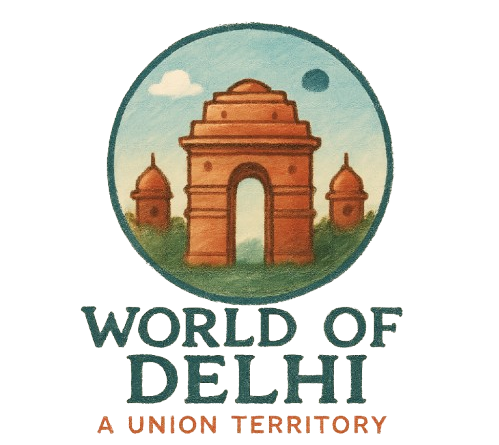Delhi Metro is a mass transit system serving Delhi and other cities in the National Capital Region. It has become a lifeline for millions of commuters in the city, providing efficient and comfortable transportation. The system contains almost 390.14 km of tracks at ground level, above the ground as well as underground. Its 286 stations, which also include NOIDA, Greater NOIDA, Gurugram, Corridor, and Rapid Metro, record a daily footfall of around 47 lakh (4.7 million).
Delhi Metro was built in three phases, wherein the first two phases consisted of radial lines and the third phase consisted of a circular and a semi-circular line. The trains travel at up to 80 km/h, stopping at each station for 20 seconds. The trains, comprising 4, 6, or 8 coaches, have a frequency of 1–4 minutes during peak hours and 5–10 minutes during non-peak hours. While some lines use broad-gauge (1676 mm) tracks, others use standard-gauge (1435 mm) tracks. Rajiv Chowk, Karol Bagh, and Laxmi Nagar metro stations are among the busiest on the Delhi metro route.
Delhi Metro Route Map

Delhi Metro Quick Info
- Owner: Delhi Metro Rail Corporation (join-venture between Government of NCT of Delhi and Government of India)
- Serving Cities: Delhi, Noida, Ghaziabad, Faridabad, Gurgaon, Bahadurgarh
- Number of Lines: 11
- Headquarters: Metro Bhavan, Barakhamba Road
- Started Operations in: 2002
- Daily Timings: 5:00 am to 11:30 pm (varies with station)
- Fare: ₹ 10–60
Delhi Metro History
The Delhi Metro has revolutionized public transportation in the city, offering a safe, reliable, and environmentally friendly mode of travel. It has played a significant role in reducing traffic congestion and improving connectivity for millions of people. Some of the important timelines of the Delhi Metro are
Planning and Inception (1948-1995)
- The idea of a metro system in Delhi was first proposed in 1948 by the Delhi Development Authority (DDA), highlighting the need for a modern public transport system in the rapidly growing city.
- In 1969, the Delhi Transport Corporation (DTC) conducted a study on the feasibility of a metro system.
- In 1984, the Delhi Metro Rail Corporation (DMRC) was established as a joint venture between the Government of India and the Government of Delhi to implement the metro project.
- The first phase of the project was approved in 1995, and the foundation stone was laid by the then Prime Minister of India, P.V. Narasimha Rao.
Phase I Construction and Inauguration (1998-2002)
- Construction of the first phase of the Delhi Metro began in 1998, with a total length of 8.4 kilometers. The first stretch, from Shahdara to Tis Hazari, was opened to the public on December 24, 2002, by the then Prime Minister Atal Bihari Vajpayee.
- This marked the official beginning of the Delhi Metro’s operations and brought significant relief to commuters. A total 64.75 km long network with 59 stations and the following 3 routes (initial parts of Red, Yellow, and Blue lines) were built in this phase.
Phase II Expansion (2003-2011)
- The second phase of the Delhi Metro’s expansion began in 2003 and focused on extending the existing lines and adding new ones. During this phase, the network expanded to cover major areas of Delhi, including important landmarks like Connaught Place, Pragati Maidan, and Delhi University.
- Phase II was completed in stages, with the last section from Central Secretariat to Qutub Minar being inaugurated on June 3, 2010. A total of 123.3 km long network with 86 stations and the following 10 new routes and extensions were built in this phase.
Phase III Expansion (2011-2017)
- Phase III of the Delhi Metro aimed at further expanding the network and improving connectivity.
- This phase involved the construction of new lines and extensions to the existing ones, including the Magenta Line and Pink Line.
- The first section of Phase III, between the Central Secretariat and Mandi House, was inaugurated on June 26, 2014.
- Phase III was completed in 2017, adding around 140 kilometres of new lines and making the Delhi Metro one of the largest metro networks in the world.
Phase IV
This phase includes the construction of several new corridors and extensions, covering areas such as Aerocity to Tughlakabad, Rithala to Narela, Janakpuri West to RK Ashram, Mukundpur to Maujpur, Majlis Park to Maujpur, Lajpat Nagar to Saket G-Block, and Tughlakabad to Terminal 1 IGI Airport. Some of the lines and stations are completed and operational as well and the rest will be operational by 2024.
Phase IV of the Delhi Metro expansion is a massive project that aims to add new lines and extensions spanning various parts of Delhi and neighbouring areas. Phase IV of the network with a length of 103 km and 6 lines were finalised by the Government of Delhi in December 2018.

